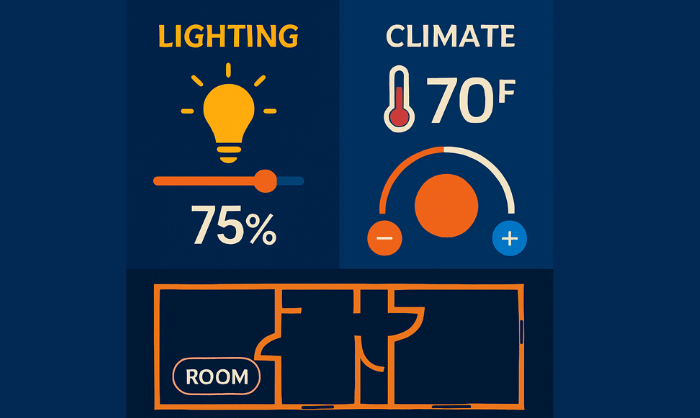The Changing Distribution Landscape – 2030 2040 2050

With the benefit of retrospect, we can presume that the number of electrical distribution start-ups will mimic those in the past ten years … in other words, very few and those that have had success, defined as significant growth, are even fewer. (Okay, let’s run an crowd-sourced effort to list electrical distribution start-ups in the last 10 years … post in the below comment section.)
Aging is a reality. Many distribution companies are owned by, and led, by first, second or third generation owners. Most don’t have a succession plan nor are molding their staffs to lead their company for the benefit of the founding family or to be able to sell to the management group.
The past 5-10 years have seen significant consolidation of “quality regional companies”
The investments needed to support customer demands become more expensive … in the tool and the people to utilize them.
Channel convergence continues due to customers requiring materials from multiple industries
So, where does this lead us?
Why thinking of this?
The above thoughts were generated during discussions at this year’s NAED regional meetings and have been percolating with industry thought leaders. Consider this as “backroom” conversation.
Now add in marketplace disruption in the name of COVID-19 and the projection that the industry won’t achieve 2019 revenues until 2023 or so. More importantly, net profit dollars will take time to recoup.
At the same time, ownership in independents age. The cost of operating a business will increase. Investments need to be made to meet customer expectations (as well as retain them), especially in technology (eCommerce and more). For many, talent needs to be acquired (do to aging or need for different skill sets.) Who knows what will happen to margins over the next year?
Okay, I’ll stop as it gets depressing, but you get the point. There are business issues that need to be addressed.
While many thought companies would close in the height of COVID, few have so far. Some may throughout the year due to cashflow issues, but for the most part, all will survive. The question becomes, how can companies recoup their momentum to recapture their value and position themselves for the future (or a more profitable future exit?)
Who are the distributors of 2030, 2040, 2050?
It’s feasible to project 5 years or look at a map and say “whom could / should buy whom” but, after a while, there are limited acquirers. One can assume that CED and Sonepar will continue to acquire. After that ???
WESCO is definitely a long term player after their acquisition of Anixter.
Now, let’s think about whom else:
- Could Ferguson, a $20B distributor focused in the plumbing space decide to expand into electrical? They already do much in residential lighting and the broader residential space. They play in the MRO space and more. Here’s a link to their online electrical offering, and they offer 25,000 lighting items online!
- What about Motion Industries, a power in the power transmission industry, expanding into the industrial / automation segment of the electrical industry? Some MRO buyers even talk about them as a material integrator.
- Kaman Distribution Group, recently spun off to a private equity company, could decide to diversify, similar to Motion. Years ago they purchased Zeller Electric and developed a relationship with Schneider. Could they decide to do again? Remember, they have PE money and hence a need to grow to determine their next event? Can you be attractive to equity markets as a single line player in a relatively small market?
- What about EIS, a company that was owned by Genuine Parts and recently spun off to a private equity firm (Audux)? Don’t know EIS? They are a large distributor focused on a specialty segment of the market.
- What’s the future hold for Turtle and Hughes, Mayer Supply, Elliott Electric? As regional players, could they get financial support and go national or will they eventually need to transition and become acquisition targets as family ownership ages?
- Will Rexel be in the US market? Could they sell the division given on again / off again challenges in trying to profitably grow the U.S. business? (Currently the stock price is in the $9 range and the market cap is less than $3 billion.)
- Will Crescent be around in 10-30 years? Remember, it is family-owned.
- Whom are tomorrow’s targets? If we go on the assumption that most of the acquirers (CED, Sonepar, etc) are not too interested in smaller distributors (<$25M) other than as a fill-in location or to support an RDC, then many of their acquisition targets become $50-250M distributors, or larger (the biggest deal was All-Phase years ago, next biggest perhaps Platt?)
- Many of these companies are in AD and IMARK.
- AD currently has about 125 members. What happens to AD’s electrical group if it is down to 40-50 members?
- IMARK can take a commensurate hit in membership as, overall, IMARK Electrical is 700+ members. It may lose some of its larger members, but still survives with a contingent that is difficult for manufacturers to engage.
- Does a smaller AD eventually migrate to IMARK? Combination of member-owned groups. Little known fact – IMARK is the original member governed group dating back to the late 1960s!
- Many of these companies are in AD and IMARK.
- The industry talks about Amazon buying an electrical distributor. The better question, if you are Amazon, is why would you want to buy an electrical distributor and invest millions of dollars into a low margin business?
- Yes, the electrical, and broader MRO, market represent significant sales opportunities but pursuing them requires significant investment. While Wall Street respects sales growth, they much prefer profitability and margins. If you were Amazon and evaluated opportunities, are there better places to invest your money? (and let’s be honest, independent electrical distributors have answered this question by investing in real estate!)
- Could ????
Couple this with the percent of business that no longer goes through full-line electrical distribution (think Grainger, MSC, Fastenal, Home Depot (and the old Interline Brands) Lowes, HD Supply, utility distributors, power transmission distributors, online sources (niche sites), sold through ESCOs, direct and a myriad of other ways. If there is a channel to market, electrical materials are sold that way. The overall market is suspected to be 30-50% higher than what industry publications project is done in the industry!
And Manufacturers?
And we haven’t touched on how interactions will change between distributors and major manufacturers.
- While we’ve had a fragmented distribution market, the product side is equally fragmented with few product categories representing a significant percent of a distributor’s spend. While some manufacturers have been aggregators and it’s a part of their growth plan (to make Wall Street happy), most cannot effectively market their product breadth to be a supplier of choice and hence revert to leverage techniques. This enables others to remain relevant.
- Could distribution equipment companies align with specific distributors? Would this prohibit their other businesses (more consumable products) from selling to other locations?
And this is just distribution ownership dynamics. Forward thinking manufacturers are already thinking about some of these issues. So are some distributors as they think of their (personal ownership) timeline and then integrate that into their business strategy.
What are the implications for your business?
Want a third-party perspective or someone to confidentially bounce ideas off of? Give us a call. We’ve considered potential criteria, and areas for consideration, to game play possible consolidation criteria. Considering the dynamics and having insight into “what could be” can help you plan for tomorrow’s strategy (as today’s strategy is already baked!)























